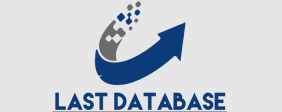To write a good introduction that really “captivates” the reader! remember that it must contain the mandatory elements of an introduction! although you can of course modify them to suit your own style:
An interesting opening sentence
this could be an intriguing question! a dataset humorous anecdote or a surprising statistic. Here the topos of brevity applies the idea of hitting the nail on the head in the shortest possible time.
A gentle outline of the context – avoid long descriptions. Remember that the introduction is supposed to be a foretaste of the rest of the content. Too much information at the beginning can be overwhelming. Explain where the topic of the work comes from.
Highlighting the purpose – indicate what the main purpose of the work is. Answer in two or three sentences why you are writing at all and what you want to achieve – this is the key to retaining the reader. Explaining the purpose of the statement gives the feeling that the text has a specific value.
Signaling the structure – if the text is longer! indicate in a few words what you will describe in the rest of the work. The reader will then know where he is and what sections await him.
“Call to action” or encouragement
do you want someone to read further generation techniques to attract new customers sign up for a newsletter! or perhaps express an opinion in a comment? Sometimes it is worth suggesting this in the very first lines. In this way! the topos of gaining attention can be reinforced by a direct address to the recipient.
Important thing: you don’t have to be super formal. If the nature of your text is casual! focus on a natural style and the power of storytelling. You can also use a dedication topos! directing the article to a specific group of readers (“I dedicate this text to anyone who is just starting their adventure with writing on the web”). Remember that the dedication topos has the advantage of creating the impression of personalized communication.
It is all these tips that make up an effective introduction – the place where your article decides to be or not to be.
Sample introduction
Want to see what this looks like in practice? Below zn business directory is a sample introduction to a blog post. Notice how it incorporates several useful rhetorical techniques:
“Do you dream of your blog posts attracting readers from the very first sentence? You’ve come to the right place! In this post! I’ll show you how to use the topos of novelty and a few simple rhetorical tricks to create a captivating introduction – one that attracts even the most demanding recipients. In the following paragraphs! I’ll reveal the secrets of amplifying the topic of your post and suggest how you can easily interest the reader in the very first lines. If you’re wondering what topics to cover to make your text come alive! stay with me! and I guarantee that you’ll read the rest of the article with even greater commitment!”
In this fragment:
A direct address to the recipient is used (“Do you dream that…”)! which allows for quick attention-grabbing .
A rhetorical question is asked! indicating that the article will solve a specific problem (how to write better introductions?).
The structure and content have been indicated (we know that there will be specific instructions later).
There is also a promised benefit (“I’ll tell you secrets… I’ll show you how…”)! which increases the desire to continue reading.
Additionally! we see here a reference to topos:
The topos of novelty (“a few simple tricks that…”) suggests that you will learn something fresh.
Captatio benevolantiae takes the form of a friendly phrase: “You’ve come to the right place!”! which builds rapport and the recipient’s goodwill.
In formal articles! such as scientific articles! you can of course create a formal introduction with a greater emphasis on methodology! definitions of terms! and a precise explanation of the purpose of the statement. Remember! however! that even in strictly academic publications! clarity counts. Overly complicated sentences and an excess of technical jargon can overshadow the main idea.

